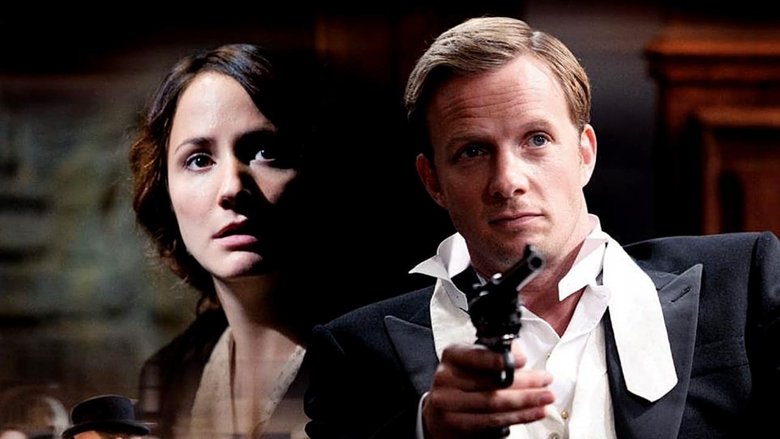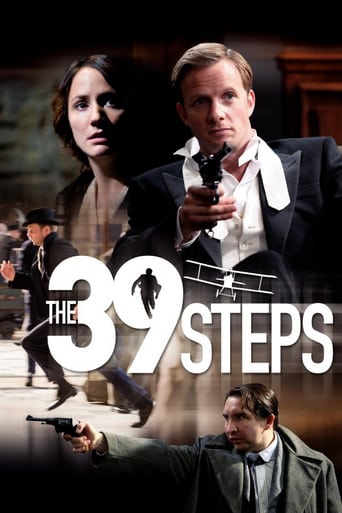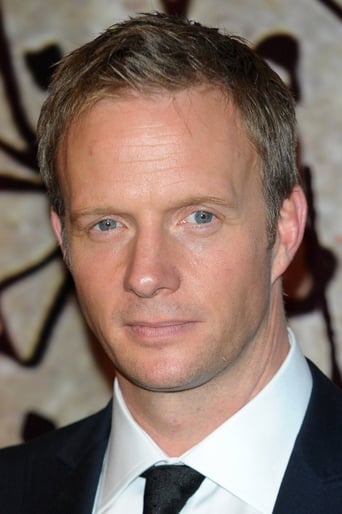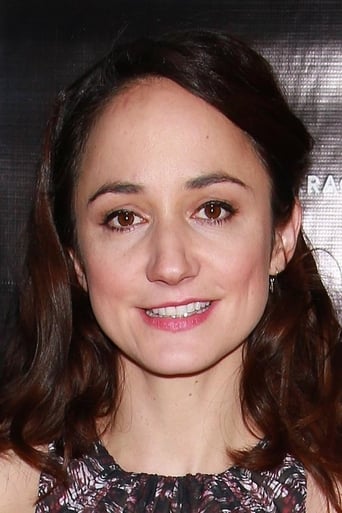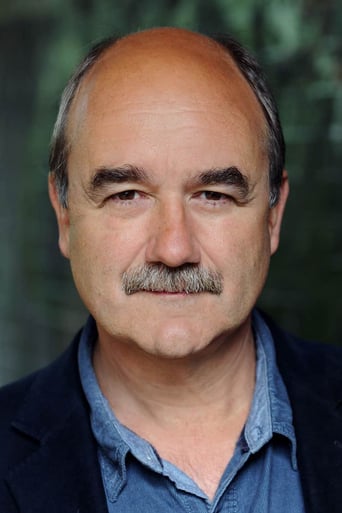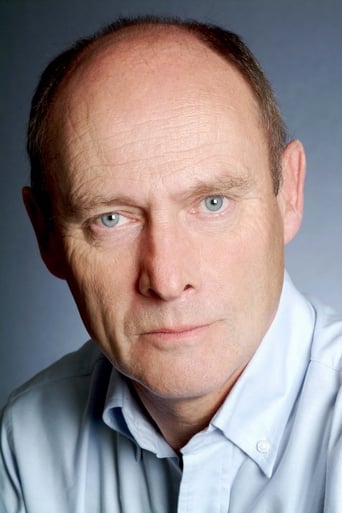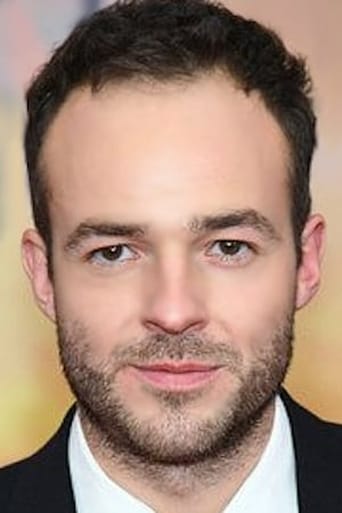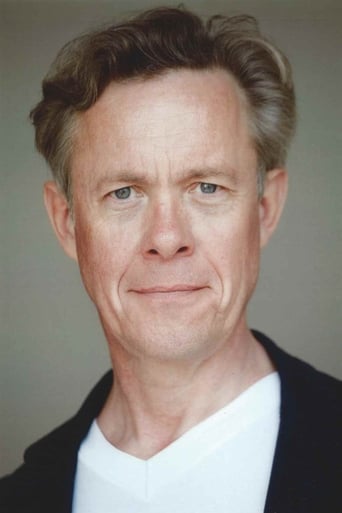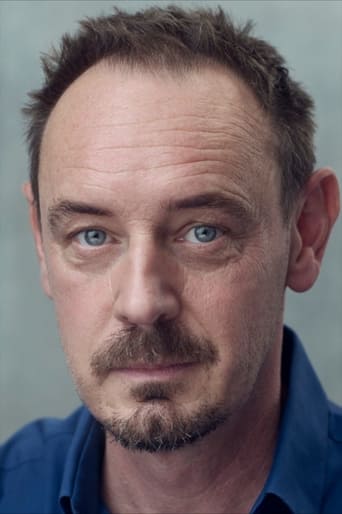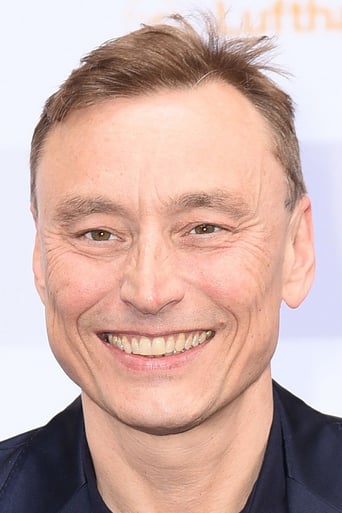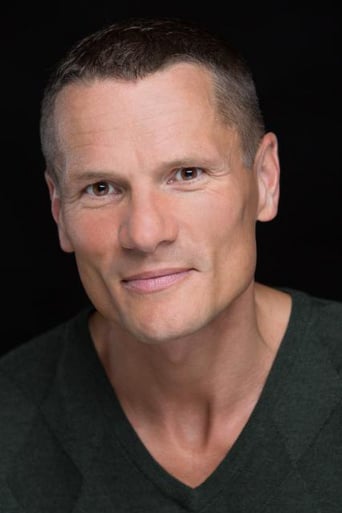Richard Hannay, a mining engineer on holiday from the African colonies, finds London socialite life terribly dull. Yet it's more than he bargained for when a secret agent bursts into his room and entrusts him with a coded notebook, concerning the impending start of World War I. In no time both German agents and the British law are chasing him, ruthlessly coveting the Roman numerals code, which Hannay believes he must personally crack.
Reviews
Good movie but grossly overrated
Don't listen to the negative reviews
This story has more twists and turns than a second-rate soap opera.
There's no way I can possibly love it entirely but I just think its ridiculously bad, but enjoyable at the same time.
When the Guthrie Theatre of Minneapolis announced its 2010 dates of live presentations and The 39 Steps was a part, I thought first of Hitchcock and wondered. His 1935 film was immensely entertaining when I first saw it on TV in the '50s or '60s -- Mr. Memory at the Music Hall, the Scotland chases, the room at the inn, and back to the Music Hall with Mr. Memory's explanation. I could hardly wait to see it again, and when I did it had lost something for me. Obviously, with mysteries, that is the case. Nevertheless, I'll always treasure the first experience. Years later I found Buchan's 1915 novel (one of a series using Hannay as the protagonist) at a yard sale and ate it up. As John Huston did with The Maltese Falcon novel, Hitchcock did with The 39 Steps -- followed a great story well told and just translated it to film. Or so I thought. I'd forgotten until finding this under "Questions" about the film: "... the actual 39 steps are different ... Hannay is never handcuffed to a woman...the romantic bit was made up for the movie...". But "both stories are highly episodic.... Buchan ... long discrete chapters ... whereas Hitchcock hurtles abrupt changes...". Well, why not since novels employ the art of high, middle, and low points but film language is the art of high points, mainly. Gotta be that way. Reluctant to watch this TV version, I did so anyway. You have to for comparison sake. I found the two leads, male and female, attractive and effective, and the camera work just as good. I'm still planning to find the book on one of my shelves. And when I do, I'll give it another go. And lay it out for my wife to consider. (Oh, oh. She says I did that the first time, and she has read it.) I remember the book as rather thin in appearance but thick with adventure. A red binding. The Guthrie stage version was a testament to creative stage adaptation. The fast pace was great fun with five (5!) actors doing quick changes for multiple roles but never harming the context. Now I found the book: copyright MCMXV, fewer than 230 5x8 pages.
After reading some of these reviews, I feel quite lucky that I had neither the Hitchcock film (which I couldn't remember) nor the original book (which I never read) by Buchan against which to compare it. Because taken on its own merit, without these other versions looming in the mind, I found this to be completely enjoyable, stylish and fun. The lead guy, (Robert Penry-Jones) is GORGEOUS and I think all the reviews in which his performance and charm were attacked had to have been written by (straight) men! I found him to perfectly embody that slightly stiff repressed sexuality of the old-fashioned English gentleman, who has a simmering core beneath his mastery of social niceties. The gal (Lydia Leonard) was great too and as a woman, I really appreciated that her personality and intelligence were highlighted over her looks, so the film also had a clever and delightful reversal of typical gender roles that gave me a big chuckle. There were many humorous touches to the film such as a nice nod to Hitchcock by paying homage to a famous scene from a different film, "North by Northwest", by including a chase scene featuring a bi-plane bearing down on our hero as he dashes about trying to dodge bullets from above. This was a really cute addition to "The 39 Steps" because of course "North by Northwest" has a similar plot; it is also a tale of a man being mixed up with/mistaken for a government agent and has numerous exciting pursuit sequences with incredible scenery. In fact, I would argue that "North by Northwest" was probably more of the inspiration for the style of this remake, although the plot details were adapted from "The 39 Steps". I find that the filmmakers therefore made a very interesting choice that is surprisingly post-modern. It exemplifies "inter-textuality" or the shaping of texts meanings by other texts, done in film. The only mainstream filmmaker I can think of who is really doing this is Charlie Kaufman ("Adaptation" "Synechdoche") and his films aren't necessarily always that enjoyable (though I loved "Being John Malkovich"). So I think this was a great success because it was highly enjoyable and didn't push such intellectual ideas; rather it playfully evoked key moments in film history, challenged male/female stereotypes, had a believable and sparky love story with attractive leads, beautiful production values, outdoor scenery, period clothes/cars etcetera (like only the BBC can do), all plugged in to well-known historical events (the Suffragette movement, the murder of Ferdinand), that gave the story authenticity. Real shame about the end therefore. Although the critical comments on this site about the plausibility are mere quibble (for example: "the dead German who couldn't shoot straight when he was conscious" who "kills" Victoria was obviously a double-double agent who was only pretending to be dead and was shooting blanks in a carefully choreographed routine in order to send Victoria back deep under cover and not get distracted by romance.Duh!), such critiques being taken care of I still thought it was just a shitty choice to make because emotional betrayal on that level - I mean letting your exciting new lover (did I mention he is GORGEOUS?) with whom you've just survived a life or death challenge, in no small part thanks to him, swim around in a freezing cold lake in tears for hours looking for your dead body when you are actually safely in the secure underwater secret service pod (or whatever; this was never explained which I also found sloppy) drinking cocoa and brandy - is NOT something easily forgiven, I would think. No matter how patriotic someone is! It would have been way better if, when the cold-hearted bitch turns up to smile enigmatically at him from the doorway of the train station FOUR MONTHS LATER, he had simply flipped her the bird and then walked off in another direction where we see him being joined by some sex-on-legs redhead with a figure like Jessica Rabbit, one of which lower appendages she curls around Hannay's calf, her stiletto dangling off her heel as they lip-lock in a crushing embrace during which he winks at Victoria. Pan to Victoria's crumpled face in the doorway seconds before it's obscured by a passing train. THE END. But apart from the absence of my fantasy ending, it was still a jolly good show! Just did a bit of research and found out the filmmaker was a woman which perhaps explains why she turned some conventions regarding "the hero" on their head. I say well done to Lizzie Mickery.
Enjoyable version up to very end.In the last scene at St Pancras how did the heroine come back to life after being shot and falling in the Scottish lake?No explanation,yet after 4 MONTHS,there she is,and not even communicating with Hannay-just sending her brother,and then she disappears!It was as if the final minutes of the film had been cut out! Then Hannay,who after 4 months not seeing her,instead of rushing to try to find her,just smiles towards where she was seen,and goes to catch his train!I was left completely up in the air,thinking that some final scenes must have been cut,and feeling cheated by not being told what had happened in those 4 months.
I enjoyed this version of 39 Steps. The story is a lot different from Hitchcock's 1935 film and the recent stage version. I saw the play on Broadway and it was very funny, almost a spoof of the film. This TV version plays it straight. Rupert Penry-Jones is excellent as Hannay and Lydia Leonard does a good job as his feisty love interest. Neither Penry-Jones nor Leonard has the screen charisma of Robert Donat or Madeleine Carroll, the leads in Hitchock's 1935 film, but they are likable and convincing.Every version of the 39 Steps is different. The only consistent character is Hannay. However, in the book he is a Scot who lives in South Africa, in Hitchock's film he was Canadian and in this film he's English. The heroines all have different names and occupations.Unlike in Hithcock's film there is no Mr. Memory and the spies this time are Germans. The original film was one of the first "innocent man on the run" stories and Hitchcock had Hannay escaping to Scotland to avoid the police and foreign spies. He started a genre which became much loved by Hollywood. This film is not really a thriller because Leonard is a spy working for British intelligence who knows that Hannay is innocent. The Hitchcock version works better because Carroll's character is an innocent bystander who initially believes Hannay is a murderer. Hithcock liked his heroines to be beautiful and Carroll definitely added some sexual interest. Carroll was one of the first stunning blonds that Hitchcock employed. BBC heroines have never had that much sex-appeal and because Leonard is less interesting to look at, it becomes harder to believe that Penry-Jones could become so infatuated so quickly. The main disappointment was the ending which was daft and something of a letdown. But, Scotland looks great, particularly the houses and the scenery. Hithcock's film was a classic and the plot changes in this TV version don't really work. It could also have done with tighter direction, but overall it was entertaining but different. Even though its probably the worst version of the story I have seen, I still found it enjoyable and worth watching.
Top Streaming Movies











